Wetland Restoration: Nature's Water Filters Explained
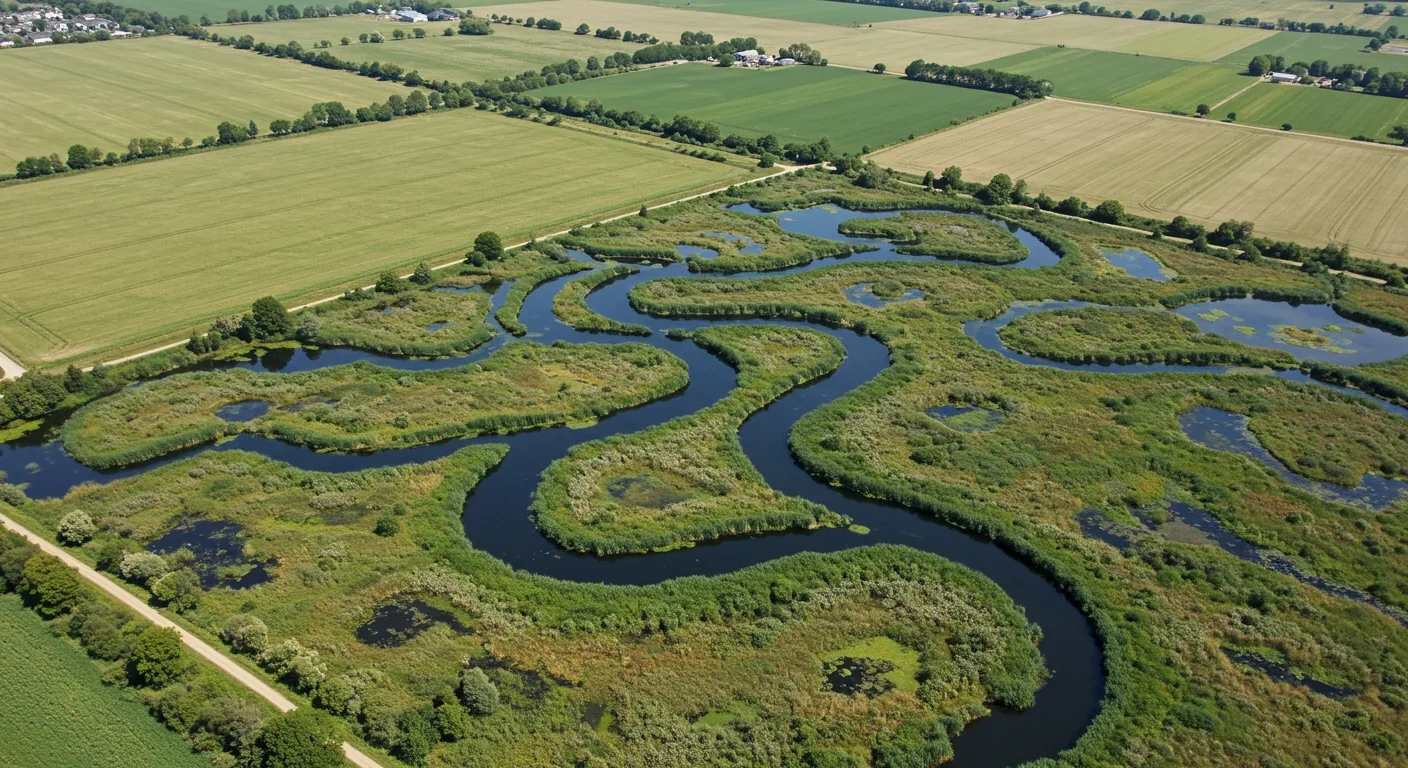
TL;DR: Marine permaculture—cultivating kelp forests using wave-powered pumps and floating platforms—could sequester carbon 20 times faster than terrestrial forests while creating millions of jobs, feeding coastal communities, and restoring ocean ecosystems. Despite kelp's $500 billion in annual ecosystem services, fewer than 2% of global kelp forests have high-level protection, and over half have vanished in 50 years. Real-world projects in Japan, Chile, the U.S., and Europe demonstrate economic viability through diversified products (food, cosmetics, biofuels), with the seaweed market projected to reach $13 billion by 2031. Individuals can support kelp restoration through citizen science, policy advocacy, investing in kelp startups, and choosing kelp-based products—accelerating a climate solution that works with nature rather than against it.
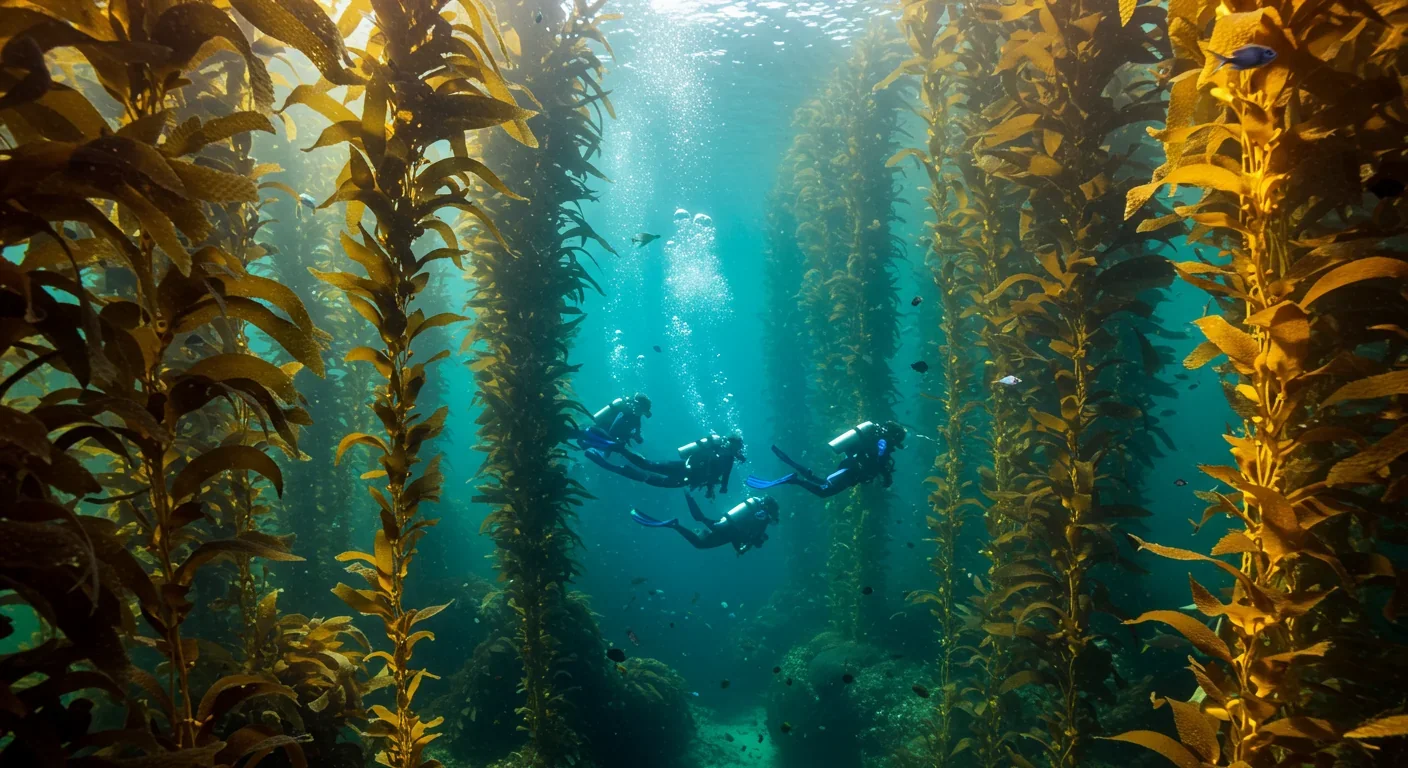
By 2030, scientists predict that strategic kelp forest cultivation could remove more carbon from the atmosphere than 50 trillion trees—while simultaneously feeding millions, restoring ocean ecosystems, and creating a new blue economy worth billions. Yet fewer than 2% of the world's kelp forests enjoy meaningful protection, and over half have vanished in just 50 years. What's unfolding beneath the waves represents both humanity's greatest climate opportunity and our most overlooked ecological crisis.
In the cold waters off Portugal's coast, scientists recently measured something extraordinary: underwater forests of giant kelp storing 16.48 gigagrams of carbon across just 5,189 hectares—representing 14% of the nation's entire documented blue carbon inventory. These weren't experimental farms or engineered systems. They were wild kelp forests doing what they've done for millennia, only now we're finally understanding the magnitude of their climate impact.
The numbers are staggering. Kelp forests fix carbon at rates up to 20 times faster than terrestrial forests, with global kelp ecosystems currently absorbing an estimated 200 million tons of CO₂ annually. Individual giant kelp plants (Macrocystis pyrifera) can grow up to 2 feet per day—30 times faster than land plants—reaching heights of 150 feet in a single growing season. When these massive fronds die and sink to the ocean floor, they lock away carbon in deep-sea sediments where it remains sequestered for centuries, effectively removing it from the atmospheric carbon cycle.
But here's what changes everything: we're not limited to protecting what exists. Marine permaculture—the deliberate cultivation of kelp forests using wave-powered pumps and floating platforms—can create these carbon-capturing ecosystems in previously barren waters. Early trials in Hawaii, the Philippines, Puerto Rico, and Tasmania have proven the concept. Now, organizations like the Climate Foundation are scaling from pilot arrays to 100+ hectare installations, transforming the technology from laboratory curiosity to industrial climate solution.
The relationship between humans and kelp forests stretches back millennia, though our ancestors couldn't have imagined their climate significance. Indigenous peoples of the Pacific Northwest wove kelp into fishing lines, dried it for winter food stores, and recognized it as the foundation of coastal abundance. In Japan, kombu (kelp) cultivation dates to the Edo period, when fishermen discovered that placing rocks on the seafloor attracted kelp spores, creating harvestable forests where none existed before. By the 1700s, Japanese farmers were achieving two years of growth in a single season through controlled inputs—an early form of marine permaculture that supported one of the world's most valuable aquaculture crops, worth $2 billion annually today.
Chile built an entire coastal economy around Lessonia kelp harvesting for cosmetics and pharmaceuticals. China and Chile together produced over 300,000 tonnes of aquatic algae by 2007, with giant kelp as a key component. These weren't just food sources—they were economic engines supporting coastal communities for generations.
Yet we've also witnessed spectacular collapses. Northern California lost 95% of its kelp ecosystems in the 2010s due to marine heatwaves. Tasmania's giant kelp forests declined 95% from ocean warming, leading to their 2012 designation as a Threatened Ecological Community under national environment law. The pattern repeats globally: kelp forests that persisted for over a century are now declining at 5% per decade, with 40-60% already degraded. In Puget Sound, approximately 80% of bull kelp forests have vanished. Along California's northern coast, the figure exceeds 90%.
History's lesson is clear: kelp forests are simultaneously resilient and fragile. They can withstand centuries of sustainable harvest but collapse rapidly when temperature, predator-prey dynamics, and nutrient availability shift beyond critical thresholds. The question facing our generation is whether we'll be remembered as the one that squandered this resource or the one that learned to cultivate it as our ancestors cultivated land forests.
Marine permaculture works by replicating and enhancing natural ocean processes. In healthy ocean ecosystems, upwelling currents bring cold, nutrient-rich water from depths of 100-500 meters to the surface, fertilizing massive blooms of kelp and phytoplankton. These photosynthetic organisms absorb dissolved CO₂ from seawater, converting it into biomass—leaves, stems, roots, and reproductive structures.
Here's where the carbon accounting gets interesting. Kelp doesn't just absorb CO₂ during growth; it fundamentally alters the ocean's carbon cycle through multiple pathways:
Direct sequestration: When kelp fronds senesce (die naturally after approximately 100 days), they sink to the seafloor. In well-mixed coastal waters, kelp forests achieve a nearly 1:1 ratio of stored carbon to atmospheric carbon removed. Studies near Vancouver Island showed that sea otter presence—which protects kelp from overgrazing—doubled the amount of blue carbon stored through this burial process. Globally, kelp likely accounts for 3% of the ocean's sequestered blue carbon, with annual carbon fixation rates averaging ~40 tons of CO₂ per hectare.
Particulate organic carbon (POC) export: The majority of kelp's primary production erodes from blade tips as particulate matter. Due to its negative buoyancy, this POC concentrates in nearshore sediments rather than dispersing to the deep ocean. Research shows kelp POC export to nearshore seagrass beds represents 7.9 ± 2.5% of kelp net primary productivity, while export to mud sediments reaches 27.9 ± 7.7%—creating carbon sinks that persist for centuries.
Dissolved organic carbon (DOC) export: Kelp also releases dissolved carbon compounds that feed microbial communities and contribute to the ocean's dissolved carbon pool, with sequestration rates of approximately 0.308 ± 0.143 teragrams of carbon annually.
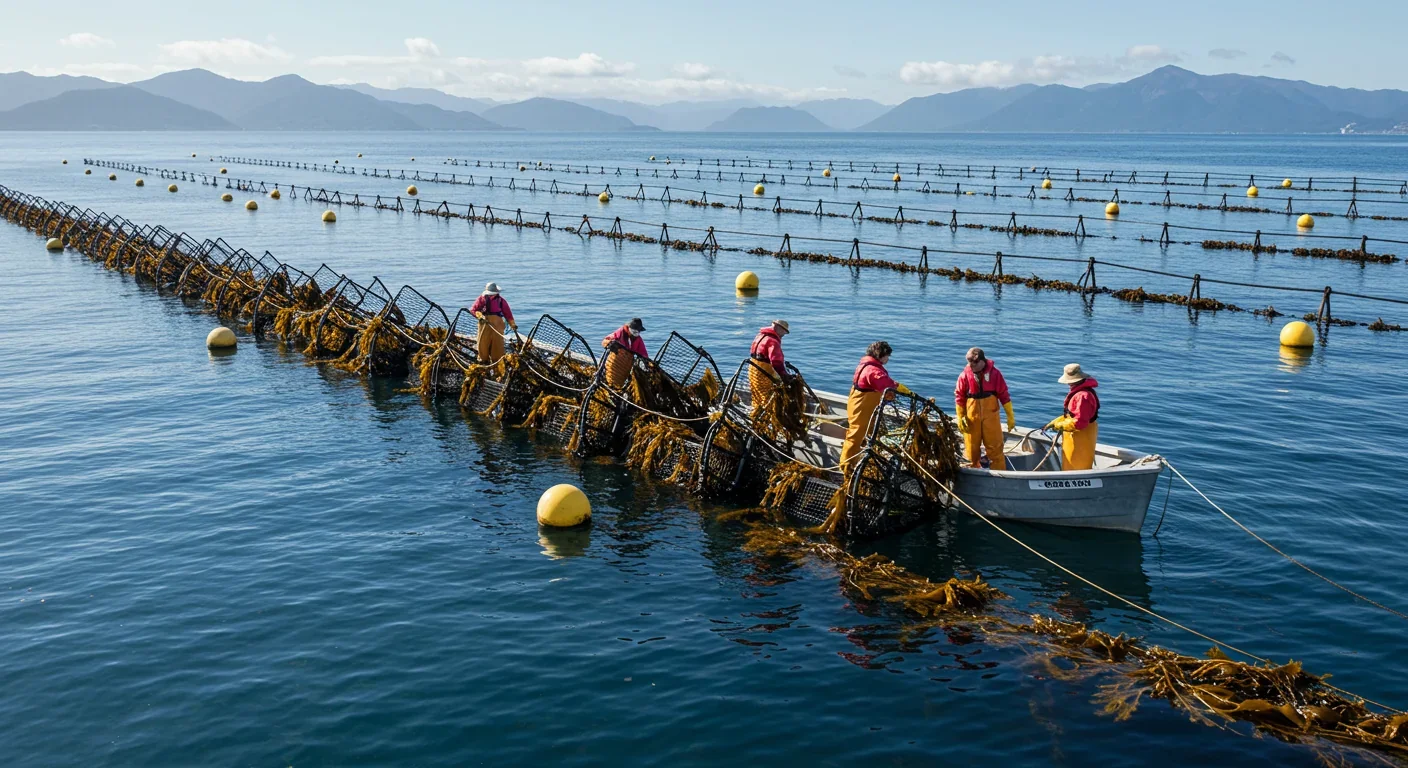
Ocean acidification mitigation: By absorbing CO₂ from seawater during photosynthesis, kelp forests raise local pH levels, creating refugia for shellfish, corals, and other calcifying organisms vulnerable to acidification. Scott Lord, an oyster and lobster farmer in Maine, began cultivating kelp specifically for this reason—to create chemical havens for his other harvests.
Trophic cascade effects: Kelp forests support complex food webs extending from microscopic grazers to apex predators. Studies in Monterey Bay revealed that sea otters, by controlling sea urchin populations, maintain healthy kelp patches that store substantially more carbon than urchin barrens. This predator-mediated carbon storage represents an overlooked dimension of blue carbon accounting.
Marine permaculture amplifies these natural processes through engineered upwelling. Wave-powered or solar-powered pumps bring nutrient-rich deep water to floating kelp platforms, enabling cultivation in nutrient-poor tropical and subtropical waters that couldn't naturally support kelp forests. The Climate Foundation's systems cycle kelp daily between shallow depths (high sunlight, low nutrients) and deeper waters (low sunlight, high nutrients), achieving growth rates four times higher than kelp transplanted to natural beds. This depth-cycling strategy, tested on the "kelp elevator" near USC's Wrigley Marine Science Center, demonstrates that with proper engineering, kelp can access both light and nutrients simultaneously—overcoming the fundamental limitation that restricts wild kelp to cold, nutrient-rich coastal zones.
The transformation marine permaculture promises extends far beyond carbon accounting. Consider the economic ecosystem already emerging:
Job creation at scale: GreenWave, a nonprofit ocean farming organization, currently trains regenerative ocean farmers and aims to train 10,000 farmers over the next decade. Ocean Rainforest, Europe's largest cultivated seaweed producer, employs 25 people and expects to produce 400 tonnes annually—and that's from a single operation in the Faroe Islands. As the industry scales, projections suggest large-scale marine permaculture could generate millions of jobs across cultivation, harvesting, processing, and blue carbon credit markets.
Processing infrastructure as the critical bottleneck: Interviews with kelp farmers consistently reveal that processing—not farming itself—limits industry growth. Atlantic Sea Farms invested $2 million in a processing facility that enables traceable, shelf-stable kelp products sold in Whole Foods and other major retailers. GreenWave's processing line increased seasonal capacity from 50,000 to 250,000 pounds of kelp through modular equipment design, much of it repurposed from other industries (an industrial firewood conveyor now transports kelp). In Alaska, where diesel generators make freezing expensive, energy costs pose severe constraints. The United States Department of Commerce's Economic Development Administration recently allocated $49 million to Alaska's seaweed industry, with $10 million earmarked specifically for infrastructure—recognizing that transportation and processing, not cultivation, determine commercial viability.
Diversified revenue streams: The global seaweed extract market reached $16.5 billion in 2023, with strong projected growth. Kelp farmers aren't just selling food—they're producing biostimulants for agriculture, cosmetics (Portugal's Lessonia kelp), pharmaceuticals, textiles, animal feed (especially for abalone and sea urchins), bioplastics, and increasingly, biofuels. Macro Oceans is partnering with the National Renewable Energy Laboratory to convert kelp waste into aviation fuel, targeting greenhouse gas emissions 50% lower than corn ethanol. Ocean Rainforest secured €2.5 million in capital from Triodos and other investors specifically to expand into cosmetics, nutraceuticals, and bio-stimulants—demonstrating how access to capital and supportive policy frameworks accelerate diversified product development.
Regenerative aquaculture integration: Marine permaculture creates particularly powerful synergies when combined with shellfish farming. GreenWave's vertical 3D ocean farms grow mussels, oysters, clams, and scallops alongside kelp, creating closed-loop nutrient cycles—kelp absorbs nitrogen and phosphorus that would otherwise fuel harmful algal blooms, while providing habitat structure that improves shellfish growth rates. Farmers report mussels grown with kelp mature bigger and faster. This polyculture approach requires no fertilizer, no pesticides, and no irrigation, while producing food and sequestering carbon simultaneously.
Coastal community resilience: In regions where fishing industries have collapsed or declined, kelp farming offers economic alternatives. Dune Lankard, a member of Alaska's Athabaskan Eyak community who has fished since age five, now operates a kelp farm through the Native Conservancy. His operation provides employment while addressing the 90% decline in Alaska's wild kelp forests. The broader pattern repeats globally: kelp farming emerges strongest in communities with existing maritime expertise, deep cultural connections to the ocean, and economic need for sustainable alternatives.
Carbon credit markets: While methodologies for kelp carbon credits remain under development, early entrants like Nori have endorsed marine permaculture projects, and the MacArthur Foundation featured it in their Bold Solutions Network. The Kelp Forest Alliance notes that biodiversity credits may attract higher per-unit prices than carbon credits, as they're easier to attribute, quantify, and verify. However, the field acknowledges substantial upfront investment in measurement, reporting, and verification (MRV) technology—sensors, modeling, and expert personnel—before robust credit systems can function. The ratio of carbon stored to carbon removed varies significantly by environment (1:1 in well-mixed coastal waters versus 1:3 in open ocean or Arctic systems), requiring location-specific MRV protocols.
Every technological intervention carries risks, and marine permaculture is no exception. Honest assessment requires confronting potential downsides:
Phytoplankton displacement: Large-scale kelp farming could disrupt existing phytoplankton productivity, producing negative biogeochemical impacts. NOAA warns that "this approach may risk displacing existing phytoplankton productivity," noting that kelp cultivation represents an ecosystem intervention, not simply carbon removal. If kelp forests out-compete native phytoplankton that support different food webs, we may inadvertently impoverish ecosystems we intended to restore.
Disease vulnerability: Ice-ice disease, strongly associated with warming seawater, already causes 15% yield losses in some seaweed species. As kelp farming expands into warmer waters through artificial upwelling, disease pressure will likely intensify. Without genetic diversity and disease-resistant strains, large monoculture kelp farms could face catastrophic failures similar to those that plague terrestrial industrial agriculture.
Regulatory uncertainty: The U.S. permitting landscape for kelp farming remains fragmented. EPA's NPDES program regulates aquaculture facilities based on production volume and discharge, with warm-water facilities subject to different thresholds than cold-water operations. Large-scale kelp farms producing over 100,000 pounds annually face effluent guidelines (40 CFR Part 451), yet many jurisdictions lack established frameworks for kelp specifically. Ocean Rainforest's application for commercial cultivation off Santa Barbara, California—following their R&D permit, the first for seaweed in U.S. federal waters—illustrates the slow regulatory pathway. The DOE-funded kelp biofuel research notes bluntly: "Many unknowns need further study, including processes for permitting and regulating kelp farms."
Equity and access: If kelp farming follows the trajectory of terrestrial agriculture, consolidation could concentrate ownership among large corporations, displacing small-scale fishers and coastal communities. Triodos Food Transition Europe Fund's investment model—supporting medium-sized operations like Ocean Rainforest—offers one alternative, but questions remain about whether commons-based management or community ownership structures can scale. Indigenous groups, who have harvested kelp sustainably for millennia, risk marginalization if intellectual property regimes and regulatory barriers favor well-capitalized entrants.
Limited sequestration timescales: Critics note that kelp carbon storage may prove only seasonal or localized rather than permanent. Unlike terrestrial reforestation, where carbon remains locked in wood for decades, kelp's 100-day frond lifespan creates rapid turnover. While sediment burial can sequester carbon for centuries, the proportion of kelp production achieving long-term burial varies dramatically by location—and artificial upwelling in open ocean may not replicate the sediment dynamics of natural coastal kelp forests.
Engineering failures: The troubled history of artificial upwelling demonstrates technical challenges. The Test-artUP experiment in the Canary Islands, funded by Germany's Ministry of Education and Research, saw its device sputter to a halt after four hours. Costs for upwelling pipes range from $100,000 to $1 million each, with uncertainty about how many pipes gigaton-scale removal would require—and whether that infrastructure is environmentally acceptable. John Auckland of Seafields commented: "I actually, personally, don't think it's the best way of doing it. I don't think hundreds of thousands of pipes in the ocean is practical, or good for marine life."
Japan's Century of Refinement: Japanese kombu cultivation represents the world's most mature kelp industry, generating $2 billion annually from nori alone. The forced cultivation method achieving two years of growth in one season through controlled inputs demonstrates how traditional knowledge, refined over generations, can rival modern engineering. Japan's approach prioritizes food security and cultural continuity—kombu isn't simply an industrial input but a foundational element of cuisine, from dashi stock to preserved delicacies. This cultural integration creates stable markets and intergenerational knowledge transfer that newer industries struggle to replicate.
Chile's Export-Oriented Model: Chile's Lessonia kelp industry focuses on cosmetics, pharmaceuticals, and exports, leveraging natural kelp forests rather than intensive cultivation. With over 300,000 tonnes of aquatic plant production by 2007, Chile demonstrates how wild-harvest models can operate sustainably when properly regulated—but also shows vulnerability to climate shocks. Experimental hybrids of M. pyrifera and M. integrifolia aim to develop climate-resilient varieties, positioning Chile as a kelp genetics innovator.
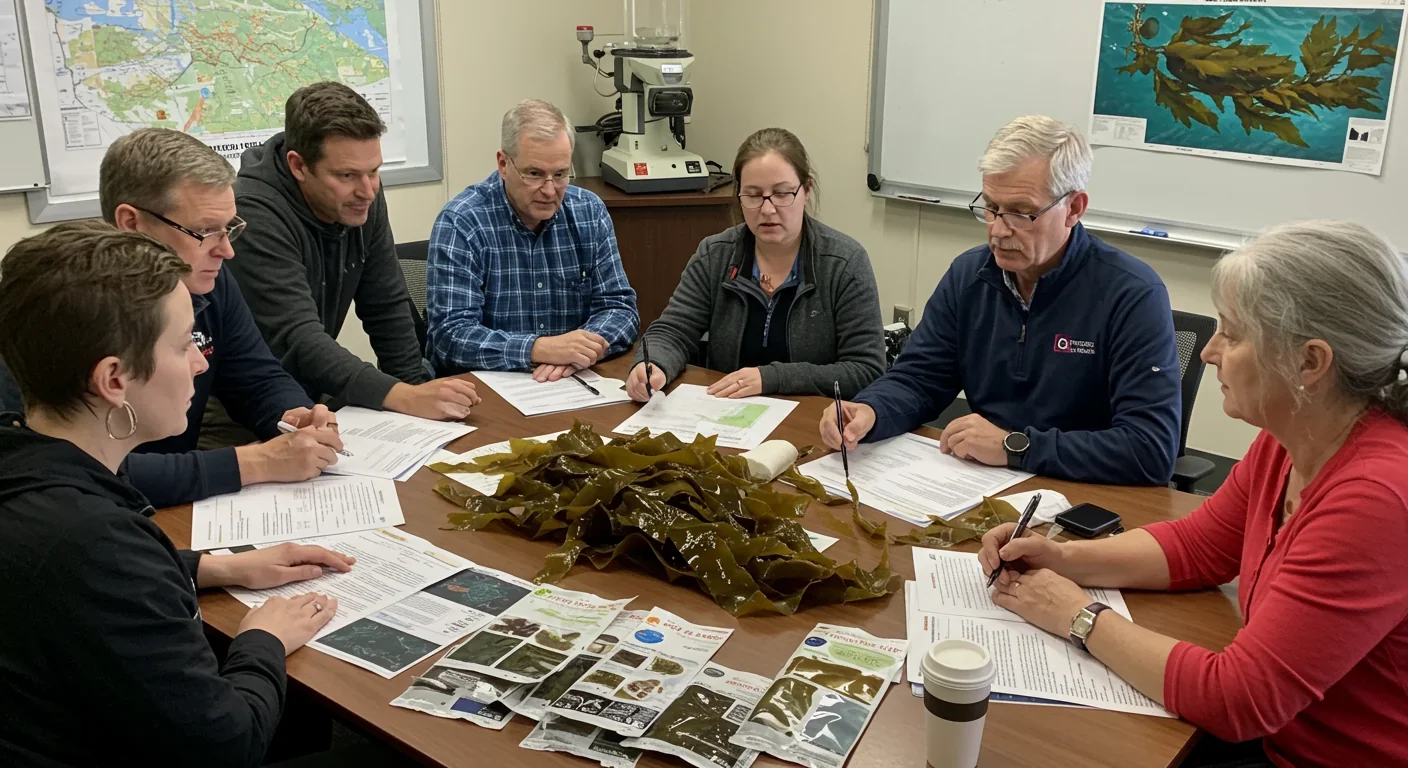
United States: Innovation Through Fragmentation: The U.S. kelp landscape is characterized by regional specialization and entrepreneurial experimentation. Maine supplies half of America's farmed seaweed harvest—well over a million pounds—with GreenWave's Connecticut operations providing seed and training. Washington State hosts three active kelp farms with one more permitting, supported by Maritime Blue's 18-month planning initiative to determine optimal market development and shared infrastructure. California combines restoration (the $3.5 million Kelp Restoration Program addressing 90% losses since 2014) with cultivation (Ocean Rainforest's Santa Barbara operation). Alaska focuses on community-led farms addressing wild kelp collapse. This fragmentation enables rapid experimentation but delays economies of scale and standardized best practices.
Europe's Regulatory Integration: Ocean Rainforest's Faroese operations illustrate Europe's pathway: securing €2.5 million from impact investors like Triodos, achieving 400-tonne production as the continent's largest cultivator, and navigating streamlined EU regulatory frameworks for commercial permits. The focus on seaweed-based fertilizers and animal feed for sustainable agriculture positions kelp within the broader "farm to fork" strategy and European Green Deal. Notably, the regulatory approval timeline in the Faroe Islands appears faster than in the United States, suggesting that harmonized frameworks accelerate deployment.
Australia and Tasmania: Restoration as Economic Strategy: Tasmania's $3.5 million kelp restoration project, led by the Institute for Marine and Antarctic Studies with The Nature Conservancy, Sea Forest, and Tasmanian Aboriginal people, combines ecosystem restoration with commercial cultivation potential. The project rears and replants giant kelp, harvests grazing sea urchins, weeds competing seaweed, and rebuilds lobster populations—a whole-ecosystem approach recognizing that kelp forests require intact trophic structures. Professor Nicole Webster frames it as "repair work required to safeguard remnant forests," emphasizing stewardship over extraction.
East Africa's Community-Led Model: Coast 4C's work across eight marine protected areas in East Africa provides 300 seaweed farmers (80% women) with farm input packages, high-quality seedlings from 18 nurseries, and climate-smart farming techniques. Farmers also help manage MPAs, establishing fishing-restricted zones. This model integrates kelp farming with marine conservation and gender equity, creating economic benefits while enhancing ecosystem health—a stark contrast to industrial-scale operations.
Whether you're a policymaker, entrepreneur, or coastal resident, the kelp transition creates opportunities demanding new skills and mindsets:
For Aspiring Kelp Farmers: The path begins with understanding marine biology basics and obtaining permits—a process requiring familiarity with local regulations (EPA, state agencies, coastal zone management). Technical skills in marine rope work, boat operation, and water quality monitoring are foundational. GreenWave offers training programs, and organizations like Hortimare provide consulting on gametophyte cultivation, sporophyte outplanting, and nursery design. Critically, kelp farming is capital-intensive: even modular processing systems cost six figures, and marine infrastructure (lines, buoys, anchors) adds up quickly. Washington's Maritime Blue planning initiative and Alaska's $49 million federal allocation suggest that collaborative infrastructure and shared processing facilities will define economic viability for small growers.
For Investors: The regenerative seaweed farming market reached $9.19 billion in 2023 and is projected to grow to $13.10 billion by 2031 (CAGR 4.53%). Investment opportunities span cultivation operations, processing infrastructure, product development (food, cosmetics, biofuels, bioplastics), carbon credit methodologies, and monitoring technology. Triodos Food Transition Europe Fund's Ocean Rainforest stake exemplifies impact investing aligning environmental, social, and financial returns. Due diligence should assess regulatory pathways, processing capacity, market access, and management experience—cultivation expertise alone doesn't guarantee commercial success.
For Policymakers: The regulatory framework will determine whether marine permaculture deploys at climate-relevant scale. Key priorities include: (1) streamlined permitting processes differentiating kelp from finfish aquaculture; (2) investment in shared infrastructure (processing, cold storage, transportation) reducing entry barriers; (3) integration of kelp forests into 30x30 conservation targets and the Kunming-Montreal Global Biodiversity Framework; (4) funding for restoration combining urchin management, predator recovery (sea otters), and active replanting; (5) standardized MRV protocols enabling carbon and biodiversity credit markets; (6) support for indigenous-led and community-based farming models preventing consolidation. The Keeping Ecosystems Living and Productive (KELP) Act, introduced in Congress, would establish NOAA grant programs for kelp restoration—a model for federal engagement.
For Coastal Communities: The 90%+ kelp losses in California, 80% in Puget Sound, and 95% in Tasmania translate to lost fisheries, coastal erosion, and ecosystem collapse. Community engagement in restoration—through citizen science programs like Reef Check's volunteer diver surveys, youth advocacy (Washington's HB 1631 designating bull kelp as the state marine forest), and targeted urchin removal—builds social license for larger interventions. Mendocino County's collaborative restoration engaged commercial urchin divers, volunteers, government agencies, and universities, producing both ecological recovery and economic benefits reports demonstrating community impact. This social component is essential: marine permaculture succeeds where communities see themselves as stewards, not spectators.
Stand at the shore and look out toward the horizon. Beneath those waves, an industrial revolution is beginning—one that works with biology rather than against it, that sequesters carbon while producing food, that creates jobs while restoring ecosystems. Marine permaculture represents what climate solutions should be: elegant, multifunctional, and aligned with natural systems.
The science is established: kelp forests can fix twice the carbon of Canada's boreal forests, grow 30 times faster than terrestrial plants, and provide ecosystem services worth $500 billion annually. The technology is proven: wave-powered upwelling, depth-cycling platforms, and floating substrates enable cultivation where kelp couldn't naturally survive. The economics are emerging: a $16.5 billion seaweed extract market, €2.5 million investments, $49 million federal allocations, and diversified products from food to aviation fuel.
What's missing is collective will. Fewer than 2% of the world's kelp forests enjoy high-level protection. Kelp remains conspicuously absent from most climate discussions, overshadowed by flashier technologies like direct air capture and solar geoengineering. Yet the numbers suggest that cultivating kelp across 10% of the ocean could offset 50 trillion trees—a scale matching the ambition of our climate challenge.
The pathway forward requires parallel action across multiple fronts. Scientists must develop robust MRV protocols, disease-resistant strains, and ecosystem models predicting large-scale impacts. Entrepreneurs need access to capital, processing infrastructure, and streamlined regulatory pathways. Policymakers should integrate kelp into conservation frameworks, fund restoration, and support community-based models. Coastal communities must engage as stewards, combining traditional knowledge with scientific innovation.
Over the next decade, you'll likely encounter kelp in unexpected places: as a soil amendment boosting your garden's productivity, as aviation fuel in your next flight, as packaging replacing plastic, or as food in restaurants embracing ocean agriculture. The transformation has already begun. The only question is whether we'll accelerate it enough to matter—or let this opportunity sink, unnoticed, beneath the waves.
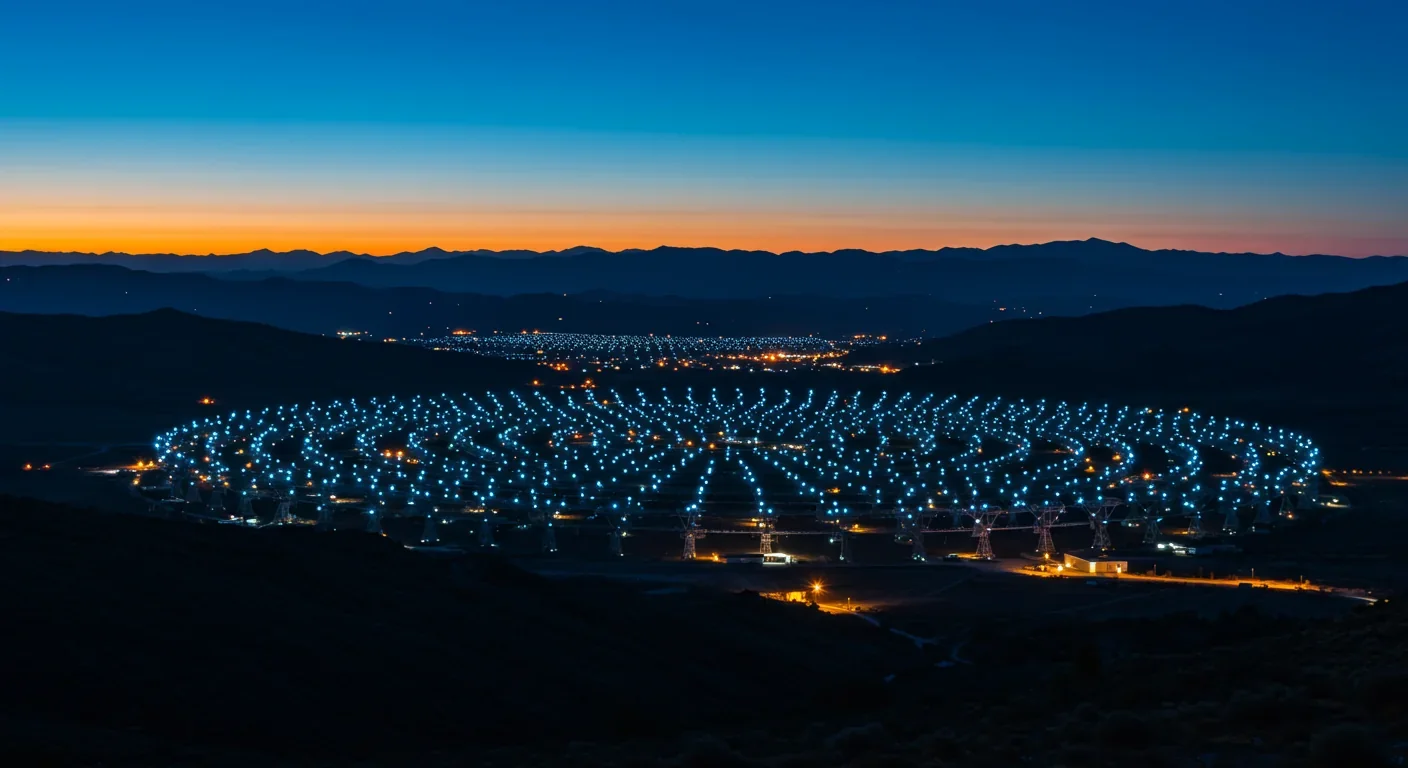
Fast Radio Bursts—millisecond flashes from distant galaxies releasing more energy than the Sun in days—have evolved from cosmic oddities into powerful tools. Advanced telescopes like CHIME now detect dozens weekly, tracing origins to specific galaxies and even individual stars. Magnetars, ultra-magnetized neutron stars, are confirmed sources, yet mysteries abound: repeaters in dead galaxies, second-scale periodicities, and absence of X-ray counterparts. FRBs now map invisible baryons, measure...
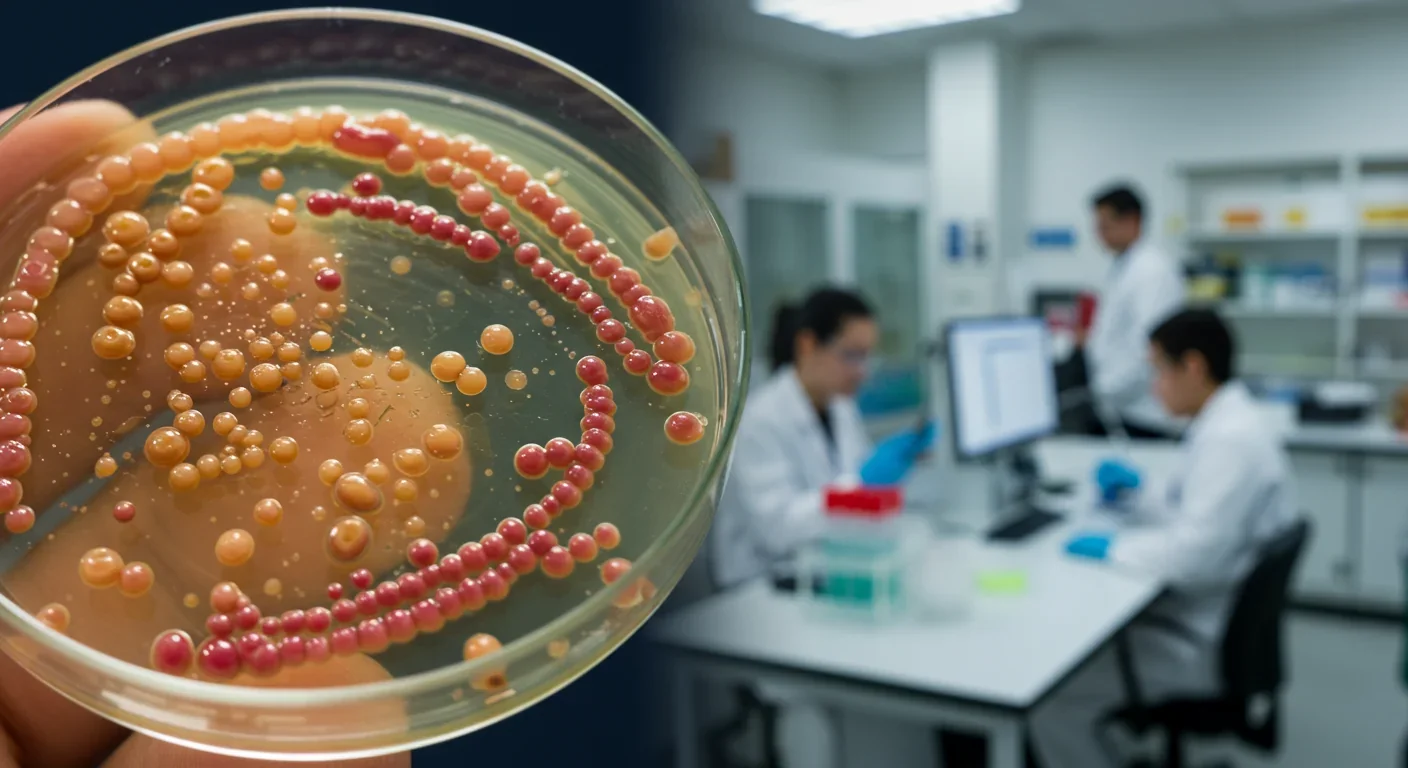
Scientists are revolutionizing gut health by identifying 'keystone' bacteria—crucial microbes that hold entire microbial ecosystems together. By engineering and reintroducing these missing bacterial linchpins, researchers can transform dysfunctional microbiomes into healthy ones, opening new treatments for diseases from IBS to depression.

Marine permaculture—cultivating kelp forests using wave-powered pumps and floating platforms—could sequester carbon 20 times faster than terrestrial forests while creating millions of jobs, feeding coastal communities, and restoring ocean ecosystems. Despite kelp's $500 billion in annual ecosystem services, fewer than 2% of global kelp forests have high-level protection, and over half have vanished in 50 years. Real-world projects in Japan, Chile, the U.S., and Europe demonstrate economic via...

Our attraction to impractical partners stems from evolutionary signals, attachment patterns formed in childhood, and modern status pressures. Understanding these forces helps us make conscious choices aligned with long-term happiness rather than hardwired instincts.

Crows and other corvids bring gifts to humans who feed them, revealing sophisticated social intelligence comparable to primates. This reciprocal exchange behavior demonstrates theory of mind, facial recognition, and long-term memory.

Cryptocurrency has become a revolutionary tool empowering dissidents in authoritarian states to bypass financial surveillance and asset freezes, while simultaneously enabling sanctioned regimes to evade international pressure through parallel financial systems.

Blockchain-based social networks like Bluesky, Mastodon, and Lens Protocol are growing rapidly, offering user data ownership and censorship resistance. While they won't immediately replace Facebook or Twitter, their 51% annual growth rate and new economic models could force Big Tech to fundamentally change how social media works.